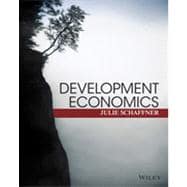Development Economics: Theory, Empirical Research, and Policy Analysis by Julie Schaffner teaches students to think about development in a way that is disciplined by economic theory, informed by cutting-edge empirical research, and connected in a practical way to contemporary development efforts. It lays out a framework for the study of developing economies that is built on microeconomic foundations and that highlights the importance in development studies of transaction and transportation costs, risk, information problems, institutional rules and norms, and insights from behavioral economics. It then presents a systematic approach to policy analysis and applies the approach to policies from around the world, in the areas of targeted transfers, workfare, agricultural markets, infrastructure, education, agricultural technology, microfinance, and health.








